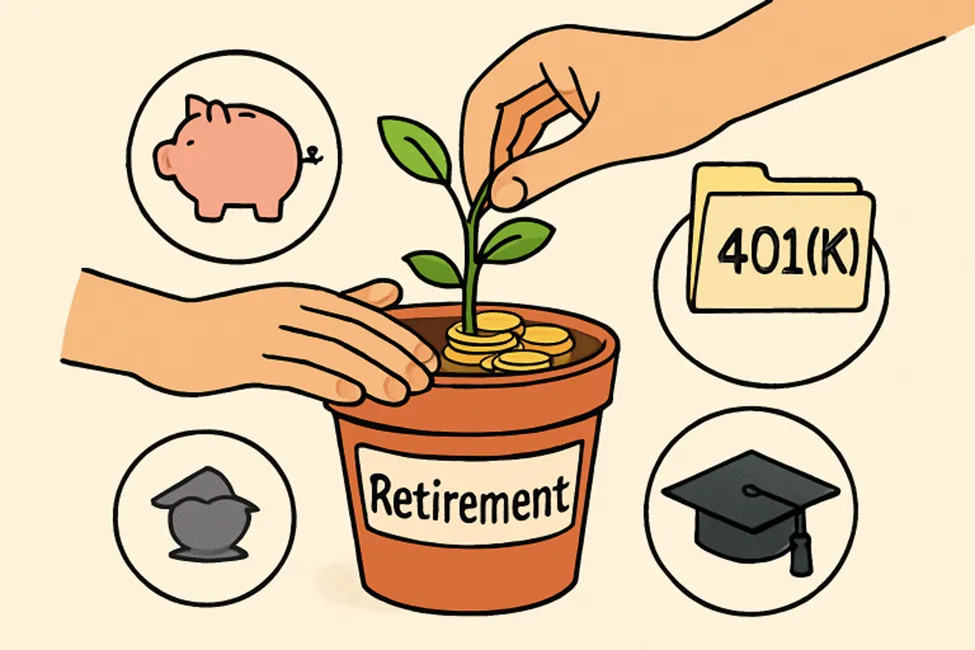How Today’s Workers Are Reimagining Retirement Benefits
The Changing Retirement Landscape
Retirement planning in the United States is undergoing a profound transformation. The era when most employees could confidently rely on lifelong pensions and Social Security is over. Today, workers must actively engage with a range of financial planning tools and employer-sponsored retirement benefits. They are seeking more personalized solutions that align with their unique financial goals and lifestyles, navigating a modern system where self-reliance and flexibility are essential.
Helping employees meet these evolving retirement goals are solutions such as automated 401(k) services. These offerings simplify investment management, enable better decision-making, and make retirement saving more accessible—particularly for those who lack investment expertise. With customization and automation, employees can now tailor their retirement pathways to their lifestyles, increasing participation and overall financial wellness.
This shift toward employee-driven retirement planning also highlights the growing importance of financial literacy. The end of the traditional pension puts the responsibility on individuals to understand investments, assess risk, and maximize their retirement contributions. As a result, workers are demanding intuitive tech solutions and more educational resources from employers.
In 2023, fewer than 12% of private-sector workers still had access to defined-benefit pensions, a sharp decline from prior decades. The growing gap between what workers need and what traditional plans provide is driving a reimagining of retirement benefits that aligns with both modern economic realities and the evolving aspirations of working Americans.
The Rise of 401(k) Plans
The rapid decline of defined-benefit pensions has positioned 401(k) plans as the new foundation of employer-sponsored retirement savings. As traditional pensions fade, 401(k) plans have emerged as a flexible, employee-driven alternative that aligns well with today’s mobile and individualized workforce. These plans not only offer attractive tax incentives for contributions, allowing for either pre-tax or Roth (after-tax) savings, but also empower employees with greater control over how their retirement funds are allocated and grown over time.
A significant advantage of the 401(k) structure is the potential for employer matching contributions, which can substantially increase an employee’s total retirement savings if they make consistent contributions. Vesting schedules ensure that employees earn ownership of those employer contributions over time, promoting retention and long-term financial planning. Additionally, participants can select from a wide range of investment options, including mutual funds, index funds, and target-date funds, allowing them to tailor their portfolio according to their individual risk tolerance and retirement goals.
According to Investopedia, 401(k) plans are among the most popular retirement vehicles in the U.S., offering a tax-advantaged way to save for the future while benefiting from compounding returns. With automatic payroll deductions and customizable features, these plans not only foster disciplined saving habits but also serve as a vital tool in building long-term financial security.

Younger Workers’ Perspective on Retirement
Attitudes about retirement are shifting, particularly among Millennials and Gen Z. For many younger workers, retirement is less about ceasing work altogether and more about achieving the freedom to pursue meaningful experiences, further education, travel, or even entrepreneurship. According to a survey by CNBC, 44% of workers are ‘cautiously optimistic’ about their ability to meet their retirement goals.
These workers prioritize flexibility, portable benefits, and greater autonomy over their financial and work futures. As a result, traditional retirement ages and one-size-fits-all plans are giving way to individualized strategies that may include phased retirements, gig work, or part-time consulting even after leaving full-time employment.
Employers’ Role in Modern Retirement Planning
The competitive job market is driving many employers to rethink their approach to retirement benefits, not only to attract talent but also to retain skilled workers in a rapidly changing economy. Some industry leaders are reintroducing pension-like features in modern forms, blending stability with flexibility to create a more comprehensive approach.
Beyond plan structures, forward-thinking companies are also investing in comprehensive financial wellness programs, digital investment platforms, personalized advice, and specialized workshops on retirement literacy. These proactive strategies demonstrate the essential role employers now play in empowering workers to make informed decisions for their futures.
Innovative Retirement Solutions
The financial technology sector is responding to shifting attitudes toward retirement with a range of emerging solutions. Decentralized annuities, for example, aim to blend the reliability of traditional pensions with the income potential of market-driven investments, offering a new level of flexibility and customization. Other new vehicles, such as health savings accounts with retirement features and hybrid insurance products, enable savers to address healthcare costs alongside lifestyle expenses in retirement.
Robo-advisors are also gaining traction, offering AI-driven, low-fee investment management and retirement planning tools accessible to all—regardless of wealth or investment knowledge. These innovations can minimize errors and reduce the anxiety often associated with creating and adjusting a retirement plan.
Access to sophisticated, easy-to-use financial tools helps widen the path to retirement preparedness, especially for historically underserved groups. Prominent publications, such as Forbes, report that increased fintech adoption is closing knowledge and savings gaps among working-age Americans.
Challenges and Opportunities Ahead
While new solutions offer promise, the road ahead involves substantial challenges. Economic volatility, rising healthcare costs, and longer lifespans complicate efforts to save and invest. Not all employees have equal access to retirement benefits, especially gig workers, part-time employees, and those in smaller businesses—a gap organizations and policymakers are working to address.
Nevertheless, there are more opportunities than ever before for both employers and employees to craft secure, flexible, and innovative retirement strategies. Staying proactive—by embracing new tools, prioritizing financial education, and seeking guidance—will be essential for successfully navigating the future of retirement.